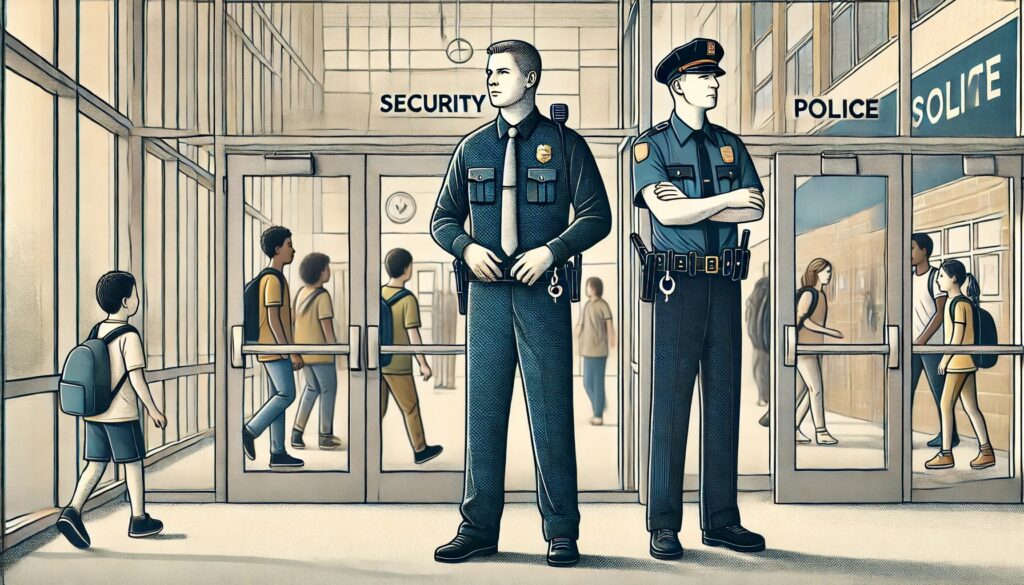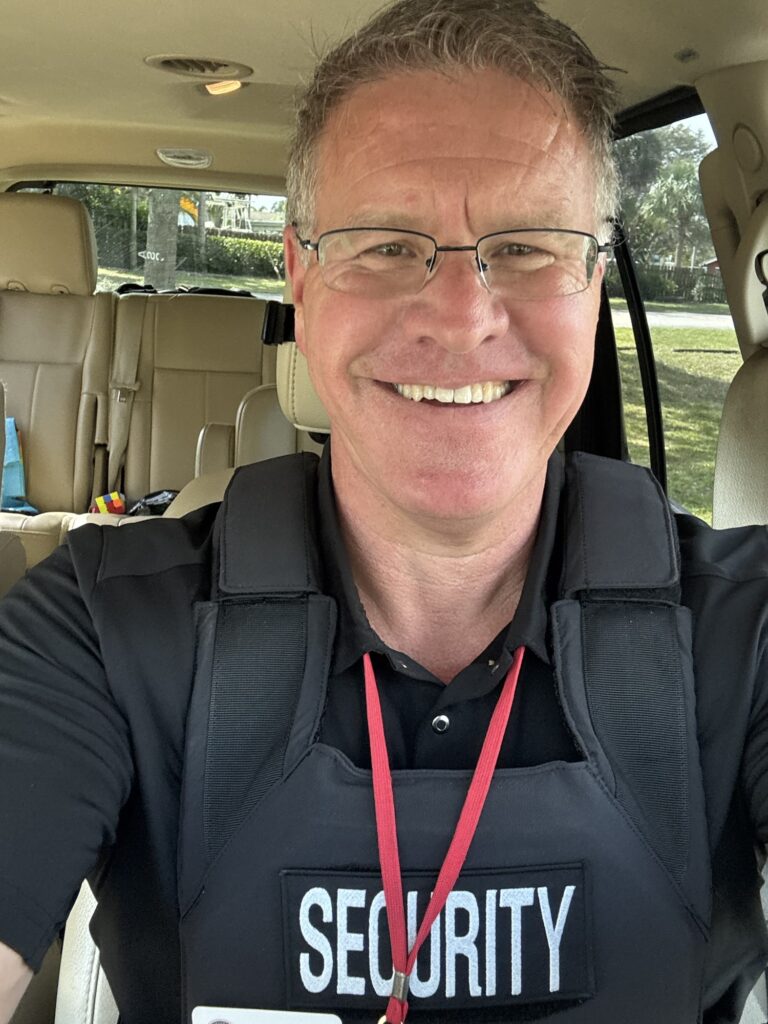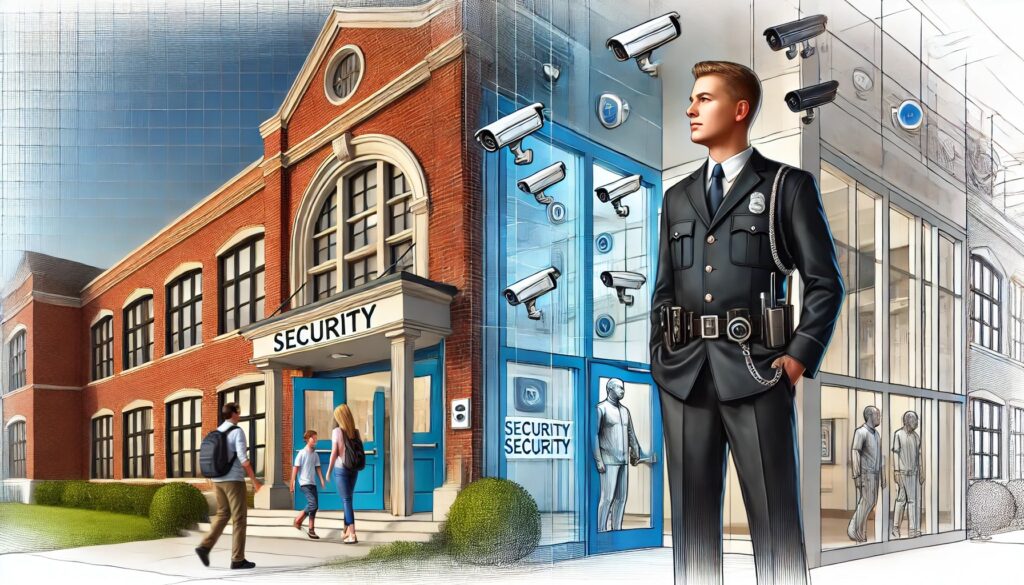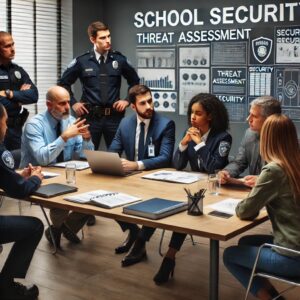1. The Reality of School Threats
Security concerns in schools extend far beyond active shooter scenarios. Some of the most pressing issues include:
• Unauthorized access – Visitors entering campus without proper screening
• Violence & bullying – Physical and cyber threats affecting student safety
• Theft & vandalism – Property damage and stolen school assets
• Emergency preparedness – Lack of training for fire, lockdowns, and medical incidents
Despite these risks, many schools still operate under outdated security models, assuming that a single guard or a few cameras are sufficient deterrents. The reality is that layered security is essential.
The 5 Pillars of Effective School Security
1. Access Control: Keeping Unauthorized Individuals Out
One of the simplest yet most effective ways to enhance school security is by controlling who enters and exits the campus. This can be achieved by:
✅ Single Point of Entry – Limiting access to one main entrance for visitors
✅ Visitor Management Systems – Requiring check-in, photo ID, and purpose verification
✅ Electronic Locks & Keycards – Restricting access to certain areas for staff only
✅ Perimeter Security – Fencing, locked gates, and signage to deter unauthorized entry
Matt Pasquinilli, a leading expert in school security, often emphasizes that a strong first line of defense starts at the door. If someone with bad intentions can walk onto campus unchallenged, the system has already failed.
2. Surveillance & Monitoring: Enhancing Situational Awareness
Having eyes on campus at all times is critical for both prevention and response. Schools should invest in:
📹 High-Definition Security Cameras – Covering all entry points, hallways, and open areas
🚔 Remote Monitoring & AI Alerts – Security staff can monitor feeds in real-time
👀 Anonymous Tip Lines – Encouraging students to report suspicious activity
3. On-Campus Security Presence: Trained Staff & Officers
Security personnel play a vital role in deterring threats and ensuring quick responses. Schools should consider:
• Hiring trained security officers (armed or unarmed based on policy)
• Partnering with local law enforcement for resource officer placement
• Training teachers and staff in emergency response (situational awareness, lockdown drills)
But security isn’t just about having an officer on-site—it’s about having the right people trained for the right scenarios.
4. Emergency Preparedness & Training: Practicing Response Plans
A school’s security plan is only as strong as the people who know how to implement it. Drills should be realistic, frequent, and varied to prepare for different threats.
🔹 Lockdown & Active Shooter Drills – Practiced with students and staff
🔹 Fire, Tornado & Medical Emergencies – Training for natural and health-related crises
🔹 Communication Plans – Ensuring parents, teachers, and law enforcement know how to respond in emergencies
One of the biggest mistakes schools make? Practicing drills without debriefing afterward. Every drill should include an evaluation to identify weaknesses and improve procedures.
5. Security Culture: Training Staff, Students & Parents
Security isn’t just about guards and cameras—it’s a culture that must be built across the entire school community.
🛑 Teach Students Situational Awareness – Encourage students to report unusual behavior
🎓 Empower Teachers & Staff – Training sessions on conflict de-escalation and emergency response
📢 Engage Parents in Security Discussions – Keeping parents informed and involved in safety measures
“Prepared people are harder to harm,” says Matt Pasquinilli. Schools that invest in training and education for students and staff create a safer learning environment for everyone.
Common School Security Mistakes
Even with the best intentions, schools sometimes fall into security pitfalls. Here are some common mistakes that can put campuses at risk:
❌ Over-reliance on technology – Cameras and alarms are great, but human training is even more important
❌ Failing to update security plans – Security threats evolve; schools should revisit their protocols annually
❌ Ignoring the importance of mental health – Prevention isn’t just physical security—it also means supporting students before crises happen
❌ Not involving the whole community – Security should be a shared responsibility among administrators, staff, students, and parents
Steps Schools Can Take Today
If your school wants to improve security immediately, start with these actionable steps:
✔️ Audit your security measures – Identify gaps in access control, monitoring, and emergency plans
✔️ Train staff on crisis response – Every teacher should know how to react in an emergency
✔️ Implement a visitor management system – No more unchecked entries into the building
✔️ Run security drills with students – And debrief after every drill to improve effectiveness
✔️ Engage a security consultant – Experts can assess risks and recommend improvements
Final Thoughts: Is Your School Secure?
School security isn’t a one-time effort—it’s an ongoing process of evaluating risks, improving procedures, and ensuring that every person on campus is prepared.
The question remains: Is your school doing everything possible to keep students safe?
If you’re unsure or want to strengthen your school’s security plan, let’s start a conversation. Share your thoughts in the comments or reach out to discuss best practices.



